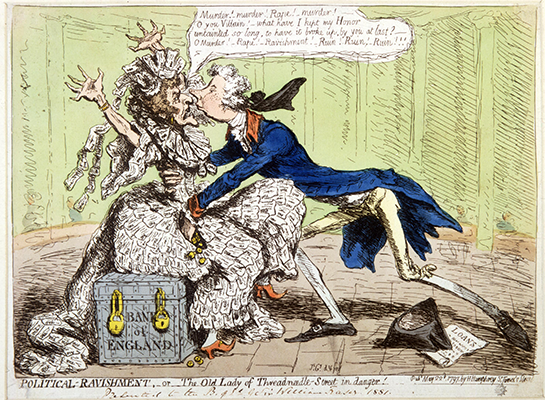Is the Bank of England missing an opportunity to implement real green policy in the wake of a slowing economy?

By Umar Kaleem- Ur Rehman, BSc Economics
In our pursuit of a carbon neutral economy, the prime minister is perceived as the most able to achieve it. Now that we have determined who our Batman is, who do you believe to be our Robin? Who is the second most powerful person in the UK to address climate change?
I will give you two hints. Firstly, they are unelected. Secondly, resist going with your initial instinct. If you guessed that this person is the Queen, you would be wrong. I will now try and persuade you how the current head of the UK’s central bank is the second most powerful person in addressing climate change. Jonathan Marc Bairstow, remember that name.
Currently, the Bank of England has their hands tied behind their back by the interest rates reaching 0%. Without the ability to raise and lower interest rates, the most important monetary tool used by the Bank of England to meet their inflation targeting mandate is useless. Consequently, the once unconventional quantitative easing programme is now becoming more conventionally used by Bairstow. This is done in an attempt to achieve a 2% inflation target each year by increasing spending in the economy.
Is this a missed opportunity for the Bank of England’s pandemic quantitative easing programme to transition into a low carbon economy? Indeed, the Corporate Bond Purchase Scheme (increased by £10 bn) implemented by the Bank of England is at odds with the Paris Climate Agreement. By their own admission, the bank stated that the Corporate Bond Purchase Scheme is aligned with 3.5 degrees of warming by the end of the century. Sadly, a carbon bias is strengthened by the reality that 57% of the Bank of England’s eligible bonds for the Corporate Bond Purchase Programme are classified within the carbon intensive sectors. Andrew Bailey has said that aligning the Bank’s Corporate Bond Purchase Scheme with climate goals such as the Paris agreement is a ‘perfectly sensible thing to do’ and should be made a ‘priority.’ However, his actions suggest the opposite is true.
Currently, the Corporate Bond Purchase Programme is a missed opportunity to set in motion investment of a green recovery and the transition into a low carbon economy. It can be argued that a broad interpretation of the Bank of England’s mandate to keep the UK’s financial system stable in the long term is a sufficient reason to address climate related financial risks. Even if the BoE decides to implement climate conscious policy, a low carbon and green corporate quantitative easing programme will not be enough to ensure a transition into a low carbon economy. Moving forward, support from the government in the form of strong fiscal policies will be needed to achieve it.
The most important takeaway is that the vast majority of people reading this article did not realise that Bairstow is in fact a professional cricketer and not the appointed head of the Bank of England, Andrew Bailey. This exemplifies the ignorant attitude towards one of the two key protagonists in the fight against climate change. As Boris Johnson takes on the role of Batman and Bailey plays Robin, are we confident that Gotham will be saved from the transitional and physical risks that climate change poses? Because currently, it is ‘business as usual.’

Featured Photo Credit: James Gillray, ‘The Old Lady of Threadneedle Street in danger’ (1797).



